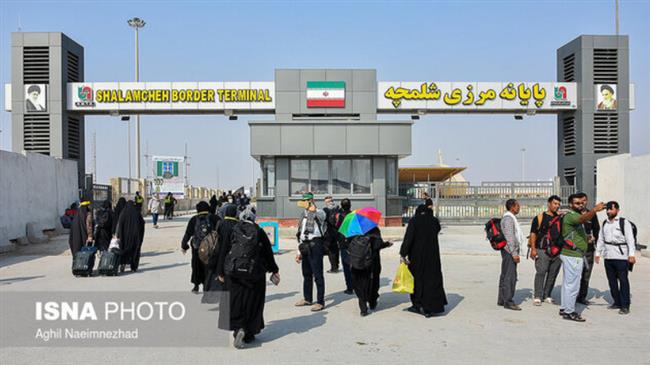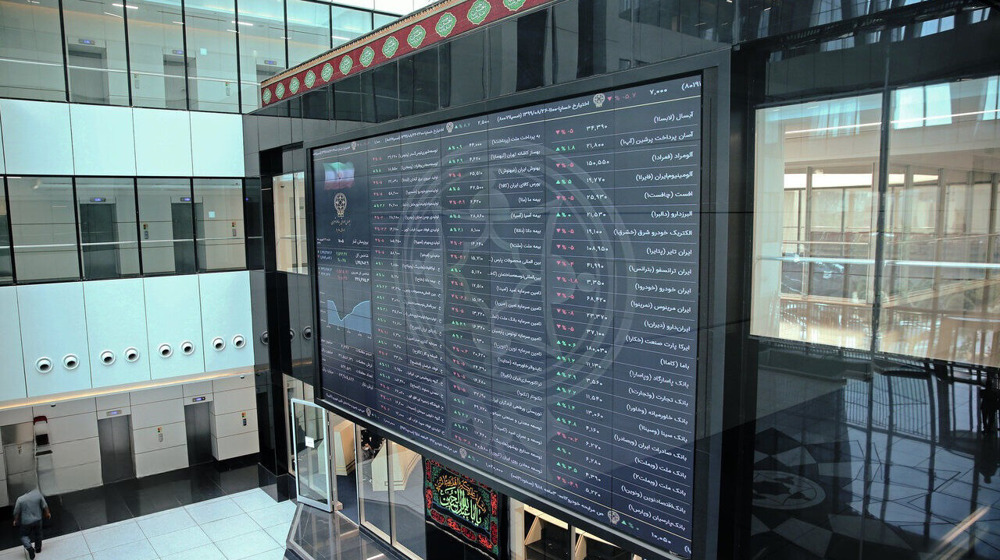Iraq reopens border to Iranian goods after three months
A key border for entry of Iranian goods into Iraq has reopened after more than three months of closure to combat the new coronavirus.
Iraqi border officials said they reopened the southern Shalamcheh border for some 500 trucks of foodstuff from Iran per week Tuesday.
Iran is one of Iraq’s biggest trading partners and their shared border is the longest for both countries. However, their close ties have detractors, mainly in the US which is pressuring Baghdad to pivot away from Tehran toward American allies in the region such as Saudi Arabia.
While Washington has made little progress so far in its bid, the coronavirus has hit trade. Head of the Iran-Iraq joint chamber of commerce Yahya Ale Es’haq said in April exports of Iranian goods and services to Iraq were down at $11 billion year on year in February from $13 billion in 2019, affected by the coronavirus.
For their run-of-the-mill sustenance, Iraqis depend on Iranian companies for many things from food to machinery, electricity, natural gas, fruits and vegetables.
The Arab country also relies on Iran for natural gas that generates as much as 45% of its electricity. Iran transmits another 1,000-1,500 megawatts directly, making itself an indispensable energy source for its southwestern neighbor.
In May, Iraqi officials said the US had again granted Iraq a month-long sanctions waiver enabling the government to continue importing gas and electricity from Iran.
The US has been enlisting its companies and allies such as Saudi Arabia to replace Iran as Iraq's source of energy, but the idea has not moved beyond the level of theory.
The Islamic Republic, for its part, is pushing forth with a 2025 vision plan to raise its exports to Iraq to $20 billion a year despite US pressures on Baghdad to keep Tehran at its arm’s length.
Much of Iraq's infrastructure remains in tatters from years of conflicts under Saddam Hussein who was backed by the West before the US fell out with the former dictator and invaded Iraq, touching off a ferocious cycle of war, violence and turmoil which laid the country to waste.
While Iraq has replaced Iran as the OPEC’s second-biggest oil producer for years, a rampant shortage of electricity has crippled its economy.
According to government figures, about 35,000 factories have been shut down since the US invasion of the country in 2003, leaving almost seven million people without jobs.
Iraq's infrastructure was severely paralyzed in 1991 when the United States attacked to incapacitate Saddam in response to his invasion of Kuwait. Wide-scale military operations which were followed by long-term economic sanctions worsened the situation.
Moreover, years of occupation by US, British and other foreign troops led to the emergence of violent terrorist groups such as Daesh which once seized about a third of Iraq’s territories and wreaked havoc in the areas they held.
The national grid now, officials say, supplies no less than 12,000 megawatts on average while the real need is 21,000 megawatts. They say there is no easy substitute to Iran because it would take three years or more to adequately build up Iraq’s energy infrastructure.
According to the New York Times, Iraqi officials have said the American demand to stop trade with Iran acknowledges neither Iraq’s needs nor the complex relations between Baghdad and Tehran.
Iraq’s former prime minister Haider al-Abadi told the New York Times in 2019 that Baghdad was in a precarious situation with the United States because the Americans failed to “look at the geopolitics of Iraq”.
“We happen to be neighbors of Iran; the US is not. We happen to have the longest border with Iran; the US does not. And we don’t have that powerful an economy,” the paper cited him as saying.
VIDEO | Afghan officials reject UNSC claims of terrorist groups’ presence
VIDEO | Resistance is also alive in occupied West Bank
Iran says Israel’s recognition of Somaliland aims to destabilize Red Sea, Horn of Africa
UN renews ceasefire call as over 200 civilians killed in RSF ethnic attacks in Sudan’s Darfur
Iran’s soft power to quench regional thirst for healthy beverages
Ansarullah: South Yemen proxy war meant to help Israeli dominance
Explainer: How America’s foster care system harms children instead of protecting them
‘A full year of injustice’: Son of Gaza doctor Abu Safiya demands his immediate release











 This makes it easy to access the Press TV website
This makes it easy to access the Press TV website